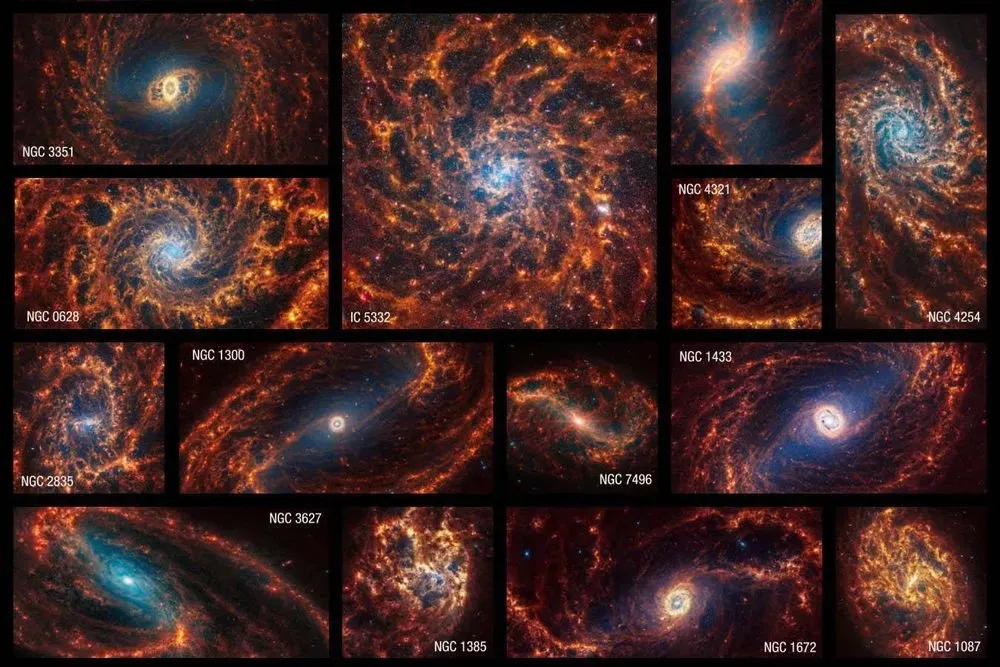The James Webb Telescope has taken unusual images of 19 nearby spiral galaxies
Kyiv • UNN
The James Webb Space Telescope has obtained unprecedentedly detailed images of 19 nearby spiral galaxies

Astronomers have used the James Webb Space Telescope (JWST) to take remarkably detailed images of spiral galaxies, showing how and where they cause star formation, writes UNN citing New Scientist.
Details
The James Webb Space Telescope, as indicated, has provided a stunning set of images of spiral galaxies. These images show 19 relatively close galaxies in more detail than ever before.
"They are stunning even to researchers who have studied galaxies for decades," said Janice Lee of the Space Telescope Science Institute in Maryland in a statement. - The resolution of the bubbles and filaments are at the smallest scales ever observed and tell the story of the star formation cycle.
In the images, the stars glow blue and the gas between them glows red. The bright blue halos near the centers of galaxies represent clusters of relatively old stars, while the stars in the arms tend to be younger. This tells astronomers that galaxies tend to start growing from their center, with star formation spreading along the arms like ripples from a pebble thrown into a pond.

Supplement
The images were taken as part of the PHANGS project, a long-running study that uses several of the world's largest telescopes to study the structure and evolution of galaxies. All of the galaxies in this set are spirals in space so that we see them as if face-to-face.